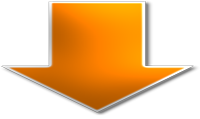The National Standards Program
The Internal Revenue Service has set up Collection Standards to help determine the taxpayer’s ability to pay back taxes in a timely, reasonable and efficient manner. The IRS has set up major category items that each taxpayer will use nationwide. These Standards will change from time to time and will be yearly updated by the IRS. You may directly contact us for these updates.
The necessary expense tests is defined as “expenses that are necessary to provide for a taxpayer and their families health, welfare and production of income.”
The National Standards for food, clothing and other items apply nationwide no matter the region. The National Standards amounts account for their family size without at all questioning the amount spent. No documentation is required.
The National Standards allowances for housing and utilities and transportation, are all known as LOCAL STANDARDS. These vary from location to location. In most cases the taxpayer will be given the amount actually spent or the LOCAL STANDARD, whichever is less. Generally the total number of persons allowed for the necessary living expense should be the same as the exemptions found on the individual tax return. Exceptions are allowed. The IRS may determine that the facts of certain cases or situations are inadequate to provide for the basic living expenses. The IRS may allow for actual expenses. They have proved themselves to be very reasonable, but may differ from agent to agent and the type of day they are having.
It is critical that documentation supports a determination when using the national and local standards or actual expenses. The IRS usually requires documentation for the past three months or sometimes more. They will also require bank statements for the last three months.
The National Standards have also been established for MINIMUM allowances for health care and out of pocket expenses. The taxpayers are allowed the standard amount without question of the monies spent. They also allow for the actual medical expenses if substantiated.
* The National Standards for food and clothing are derived from the Bureau Of Labor Statistics and the Consumer Expenditure Survey. These surveys collect information on families and their buying habits. These standards are grossly inaccurate and do not reflect the true facts. However, there is little we can do to change these figures.
* The National Standards for housing and utilities are derived per Census and BLS data that are provided by each State and County Housing and Utilities standards. Included are mortgage or rent, property taxes, interest, insurance, maintenance, repairs, gas, electric, water, heating oil, garbage collection, telephone and cell phone. The tables include five categories for one, two, three, four, and five or more persons in a household.
* The National Standards for Out of Pocket Health Care have been established for out-of-pocket health care expenses including medical services, prescription drugs, and medical supplies (e.g. eyeglasses, contact lenses, etc.).
The table for health care allowances is based on Medical Expenditure Panel Survey data and uses an average amount per person for taxpayers and their dependents under 65 and those individuals that are 65 and older.
The out-of-pocket health care standard amount is allowed in addition to the amount taxpayers pay for health insurance.
* The National Standard for taxpayer’s vehicles consists basically of two different parts. Nationwide figures for monthly loan or lease payments referred to as ownership costs, and additional amounts for monthly operating costs broken down by Census Region and Metropolitan Statistical Area. The ownership cost portion of the transportation standard, although it applies nationwide, is still considered part of the Local Standards.
The ownership costs provide “maximum allowances” for the lease or purchase of up to two automobiles if allowed as a necessary expense. A single taxpayer is normally allowed one automobile.
The operating costs include maintenance, repairs, insurance, fuel, registrations, licenses, inspections, parking and tolls.
If a taxpayer has a car payment, the allowable ownership cost added to the allowable operating cost equals the allowable transportation expense. If a taxpayer has a car, but no car payment, only the operating costs portion of the transportation standard is used to figure the allowable transportation expense. In both of these cases, the taxpayer is allowed the amount actually spent, or the standard, whichever is less.
These National Standards are a gross misrepresentation of the average taxpayer and little has been done to help the taxpayers burdened by this. If you click on this link you will find the National Standards:
http://www.irs.gov/individuals/article/0,,id=96543,00.html
We at Fresh Start Tax have found many ways to make the most out of the National Standards.
The IRS National Standards Program for 433-A and 433-F.
Filed Under: Tax Help | Uncategorized
Tags:
FREE
Consultation
No Obligation

“Thanks to Fresh Start, I am feeling more and more confident about finally getting caught up after all these years.”
“I will certainly refer anyone I come across who needs your services for sure.”
“I cannot thank you enough for handling my IRS issues. After dealing with another office who did nothing, you guys did everything that you promised. Thanks again, especially Steve Jacob for guiding me every step of the way.”
